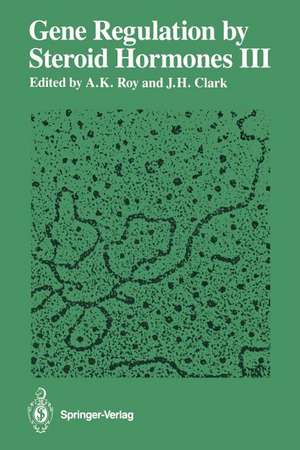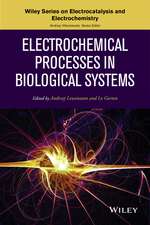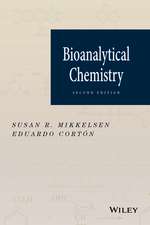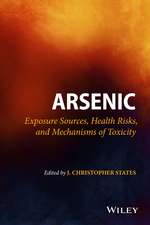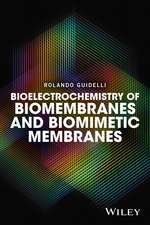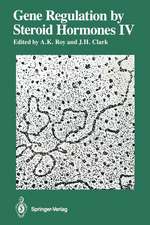Gene Regulation by Steroid Hormones III
Editat de Arun K. Roy, James H. Clarken Limba Engleză Paperback – 13 oct 2011
Preț: 945.62 lei
Preț vechi: 1153.19 lei
-18% Nou
Puncte Express: 1418
Preț estimativ în valută:
180.97€ • 196.50$ • 152.01£
180.97€ • 196.50$ • 152.01£
Carte tipărită la comandă
Livrare economică 22 aprilie-06 mai
Preluare comenzi: 021 569.72.76
Specificații
ISBN-13: 9781461291145
ISBN-10: 1461291143
Pagini: 320
Ilustrații: XII, 302 p.
Dimensiuni: 155 x 235 x 17 mm
Greutate: 0.45 kg
Ediția:Softcover reprint of the original 1st ed. 1987
Editura: Springer
Colecția Springer
Locul publicării:New York, NY, United States
ISBN-10: 1461291143
Pagini: 320
Ilustrații: XII, 302 p.
Dimensiuni: 155 x 235 x 17 mm
Greutate: 0.45 kg
Ediția:Softcover reprint of the original 1st ed. 1987
Editura: Springer
Colecția Springer
Locul publicării:New York, NY, United States
Public țintă
ResearchDescriere
The field of steroid hormone action has continued to expand into the realm of molecular biology at a pace even faster than most of us ever imagined. techniques of molecular biology have made it possible to clone The hormone-regulated genes and to examine steroid-receptor interactions with these genes. Nucleotide sequences of these genes, which show preferential binding of steroid receptors, have been identified. These results are complemented by the identification of chromatin acceptor proteins, which also show preferential binding for steroid-receptor complexes. Thus, one can envision the day when cloned genes, purified acceptor proteins, and receptor-steroid complexes will be recombined in vitro to form a functional unit. Cellular localization of steroid receptors has undergone recent revision, and it now appears that receptors are localized primarily in the nuclear compartment. These findings, although controversial, will lead to a reassessment of many of the previous concepts of steroid-receptor interactions and regulation. The way in which these observations at the of physiology, molecular and cellular levels fit into the overall scheme development, and evolution are continuing to progress, and the future promises some very exciting syntheses of understanding at all levels of biological organization. The third Meadow Brook Conference on hormones was held in order to bring together investigators who will undoubtedly contribute heavily to this future synthesis and to permit a free exchange of ideas and concepts as they relate to the current state-of-the-art in molecular endocrinology. Spring 1986 ARUN K. Roy JAMES H. CLARK Contents Preface. . . . . . . . . . . . . . . . . . . . . . . . . . . . . . . . . . . . . . . . . . . . . . . . . . . . . . . . . . . . . . . . . . v Contributors . . . . . . . . . . . . . . . . . . . . . . . . . . . . . . . . . . . . . . . . . . . . . . . . . . . . . . . . . . . .
Cuprins
1. Biochemical Evidence for the Exclusive Nuclear Localization of the Estrogen Receptor.- 2. Structure, Dynamics, and Cloning of the Estrogen Receptor.- 3. Physical and Functional Parameters of Isolated Estrogen Receptors.- 4. Type II Binding Sites: Cellular Origin and an Endogenous Ligand.- 5. Human Progesterone Receptors Have Two Intracellular Hormone Binding Proteins That Are Covalently Modified in Nuclei.- 6. The Two Phosphorylation Reactions of the Progesterone Receptor.- 7. Receptor-Mediated Action of the Vitamin D Hormone.- 8. Characterization of the Nuclear Binding Sites (Acceptor Sites) for a Steroid Receptor.- 9. Antibodies to Estrogen, Progesterone, Glucocorticoid, Vitamin D Receptors and Autoantibodies to Androgen Receptor.- 10. Isolation and Characterization of cDNA Probes for Human CBG and Rat ABP.- 11. Ornithine Decarboxylase mRNAs in Murine Kidney: Structure and Regulation by Androgens.- 12. Glucocorticoid Receptors and the Control of Gene Expression.- 13. Activation and Regulation of the Vitellogenin Gene Family.- 14. Intra- and Intercellular Aspects of the Hormonal Regulation of ?2u-Globulin Gene Expression.- 15. Hormonal Regulation of Sexually Differentiated Isozymes of Cytochrome P-450 in Rat Liver.- 16. Interaction of Thyroid Hormone and Carbohydrates on Hepatic Gene Expression.
